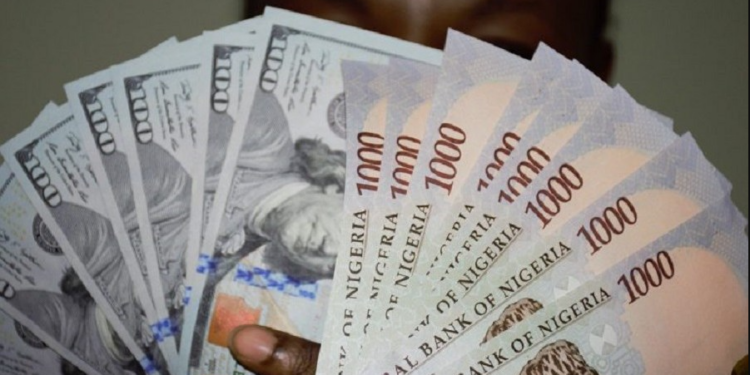
The naira held onto its bullish momentum despite the dollar’s most recent aggressive gains this week, as concerns about persistent inflation remained unabated, despite weaker-than-expected March U.S. producer prices. This reinforced the belief that the Federal Reserve will postpone raising interest rates this year.
The Nigerian naira rose to a four-month high of N1,120 per dollar on the black market amid high activity in Nigeria’s money market, driven by a series of foreign exchange (FX) reforms of the Central Bank of Nigeria (CBN) that has unlocked dollar liquidity.
Price action shows the pathway for the bulls seems clear, as the naira broke a key resistance level of N1200 against the greenback, especially when the dollar is strengthening amid strong U.S economic data as recent fundamentals show the local currency is set to test the N1000 mark
Fundamental boost naira’s fortunes
The turning point for the naira was the CBN’s clearance of the FX backlog of requests estimated to be worth $7 billion
That naira’s present level was already the highest the currency has traded since mid-last year at the unofficial market on the eve of a second round of devaluation that cut more than half from the naira’s value against the dollar since President Bola Tinubu eased foreign exchange controls in June.
According to Goldman Sachs, rate increases in Nigeria and improved capital inflows indicate a “turning point” for the naira.
Renaissance Capital’s latest projection on Nigeria’s FX market disclosed that the naira is still undervalued and should be at N912 against the dollar.
In April, the CBN forbade the use of dollar collateral for naira loans, except government Eurobonds and foreign bank guarantees, and offered to sell dollars to the nation’s Bureaux de Change at more market-reflective rates.
Total inflows into the NAFEM jumped by 41.7% to $3.75 billion from $2.64 billion in February, the highest amount since March 2019 ($6.07 billion), according to data readings from the FMDQ,
The CBN also evaluated the exchange rate for these operators, bringing it down from N1,251/$1 to N1,101 per dollar.
Nigeria’s central bank raised the benchmark interest rate this year by 600 basis points to 24.75% since February to combat rising inflation. Some stability in the naira has boosted coincidence in the currency partly by CBN’s generally robust attitude, which included cracking down on the unofficial market and virtual service providers for allegedly amplifying the naira’s weakening by driving demand for the dollar pegged USDT coin.
Hawkish U.S. Fed
Consequently, the naira had ignored the hawkish narrative of the U.S Fed despite recent emphasis on the need for a cautious approach to loosening monetary policy, which would strengthen the greenback.
The producer pricing index (PPI) increased 0.2% month over month in March, contrary to the 0.3% increase that economists had predicted. It increased 2.1% year over year as opposed to an anticipated 2.2% gain. The US dollar had earlier declined but has since recovered following the PPI announcement



